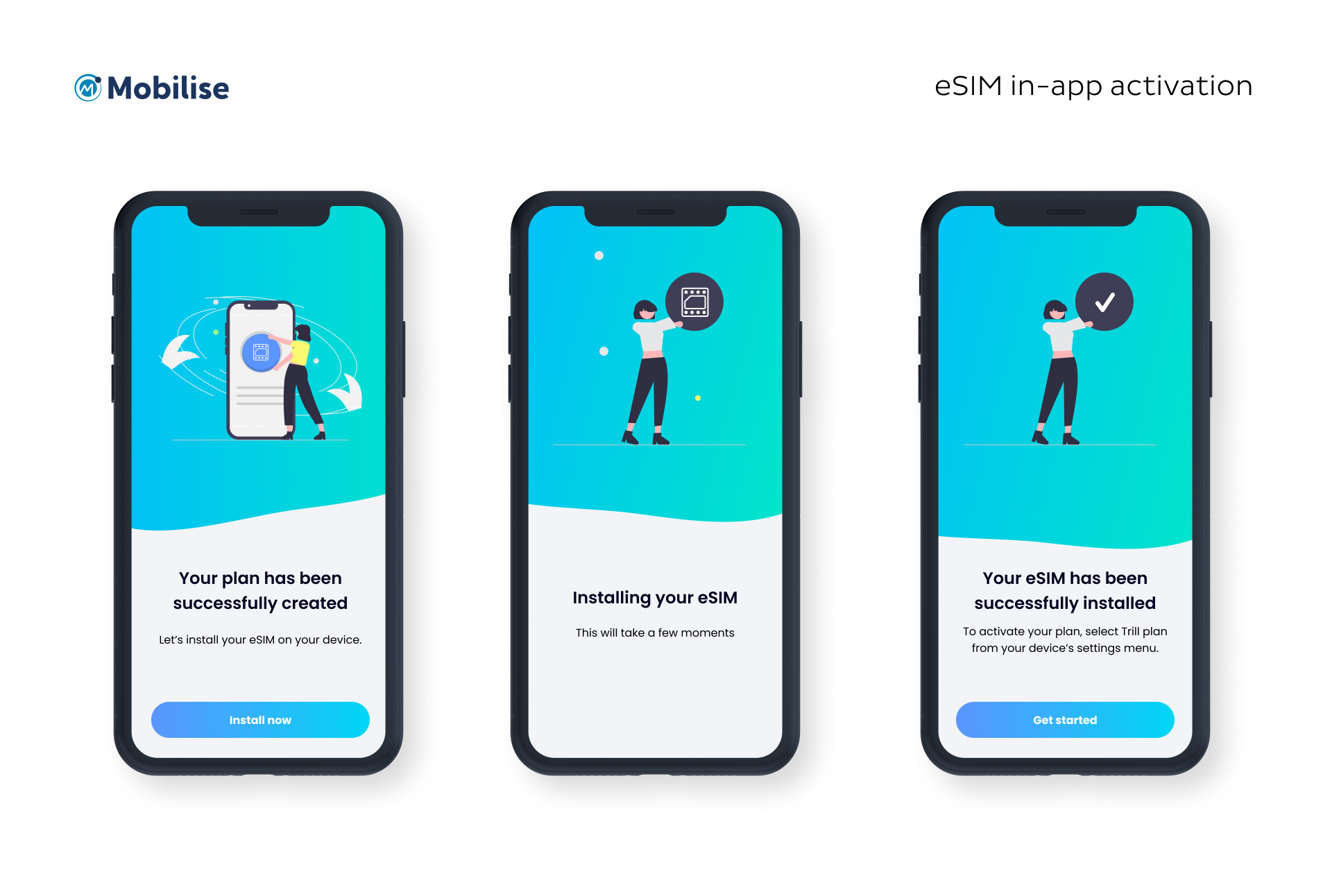Keeping connected while abroad is no longer just a nicety, but a necessity for travellers across the world. In fact, according to the HighSpeedInternet, as many as 81 per cent deem it an essential. Whether using the internet to navigate a new city, search for local information or keep in touch with friends and family, everyone has a reason to keep connected. As technology develops, this need has sparked a new revenue opportunity for travel players, like airports, as Hamish White, CEO and founder of eSIM pioneer Mobilise, explains.
For years, the most favourable solution to travellers’ internet challenges has been roaming — using mobile data outside of the range of native network coverage. But roaming isn’t the only way to keep connected abroad. Other options include using public Wi-Fi networks, purchasing a local SIM card and the most recent addition, purchasing a travel eSIM.
Travel eSIMs 101
An eSIM, or embedded SIM, is a digital SIM card. It performs the same function as the standard physical SIM card we are all accustomed to, but instead of being a separate piece of hardware, it’s a chip that’s physically soldered into a mobile device. To connect to a mobile network, it downloads over-the-air network credentials and remotely provisions and authenticates the user’s mobile subscription to enable them to access mobile services.
eSIMs are becoming increasingly commonplace in the traditional telecoms space — eSIM-enabled mobile plans are available through 343 operators worldwide across 102 countries, according to the latest data from GSMA Intelligence. But the ability to remotely onboard customers, with no hardware or physical interaction required, has resulted in the development of another type of connectivity known as embedded connectivity.
Embedded connectivity relies on a software development kit (SDK) to embed fully digital connectivity services into any existing application. Utilising eSIMs, the SDK ensures a digital onboarding journey without the in-house development timescales and costs. That means non-telco businesses with no prior experience in the field can easily and quickly offer connectivity services, like data bundles for specific countries, aimed at travellers, with just a few pieces of technology.
Once the technology is in place, the travel provider can offer eSIMs directly through their own mobile application. Users can complete the whole end-to-end process, from launching the app, selecting their destination and amount of data they wish to purchase and installing their eSIM in just a few minutes.
The benefits for consumers
If there are already several methods of getting connected available to consumers, you may wonder why consumers would consider a travel eSIM. There are, however, many benefits to the alternative way of connecting abroad.
Each typical way of connecting has its shortfalls. For roaming, charges can quickly add up and become an unforeseen burden for travellers, with Uswitch reporting that Brits as a collective have accumulated over £539 million in unexpected roaming charges over the last twelve months. Similarly, in general Wi-Fi hotspots don’t have the coverage and availability to compare with mobile connectivity and require you to enter your personal information and sign up for additional services. Additionally, using public Wi-Fi can be unreliable and risky, with Forbes reporting 40 per cent of survey respondents having had their information compromised while using a public Wi-Fi network.
Additionally, challenges arise when opting for a local SIM card. Find yourself in a country with a language barrier, and with no mobile data to support conversation, and purchasing and setting up a local SIM successfully is an additional headache and barrier to overcome once travellers land in their destination. Once you’ve set up your local SIM, there’s the additional hassle of physically swapping out your SIM card for another, and then trying not to lose a tiny piece of plastic for the duration of your stay — particularly troublesome for those on the move.
Travel eSIMs do away with all these shortcomings. They allow travellers to connect to reliable networks from their mobile device without needing to visit a physical store or arrange the acquisition of a physical SIM card. Additionally, most devices can hold multiple eSIMs simultaneously — for Apple, it’s up to eight eSIM profiles. This means that users can use multiple eSIMs on the same device, a perfect solution for business travellers or those who need both a home and international number. With travel eSIM packages, travellers can board their flight with the piece of mind that they’ve already organised their connectivity and can access the internet from the moment they land in a new country.
The opportunity for airports
Airports are perfectly positioned to benefit from the emergence of embedded connectivity. With thousands of visitors stepping foot through their doors every day, everyone who visits an airport is a potential customer for a travel eSIM. And if their travel eSIM provider is the airport itself, it’s an additional ancillary service that could result in significant revenue generation.
Kaleido Intelligence found that travel eSIM providers will see retail spend on such services increase by 500 per cent over the next five years. This will catapult the global travel eSIM market to be worth close to $10 billion while representing over 80 per cent of total travel SIM spend by 2028. The research shows that consumers will adopt travel eSIM, offering a huge revenue boost for airports that adopt the technology early.
Early adoption is key. Though the potential of embedded connectivity for the travel industry is apparent, only a handful of businesses offer it at present. Providing travel eSIMs presents airports with the opportunity to offer a unique service that appeals to tech-savvy travellers seeking convenience, making the airport and the general travel experience more seamless. And by offering hassle-free experiences, airports can enhance customer satisfaction, leading to increased chances of repeat business.
How to offer a travel eSIM package?
If an airport decides to add embedded connectivity to its service offer, it must have a mobile app through which travellers can purchase their eSIM. Then, it has two steps to complete before it can offer connectivity. First the airport needs to partner with a connectivity provider, whether that’s a mobile network operator or a company with mobile network agreements with operators globally, known as a roaming aggregator.
Next, it must determine a method to connect the app to the connectivity provider and offer a way for users to connect to the internet. The latter is certainly the more complex task, requiring significant time, effort and resources. Or, alternatively, airports could consider a software development kit from an embedded connectivity provider, which would allow them to drop the required application programming interfaces (APIs) into their preexisting mobile application. Instead of taking 18 months, the whole process could be complete in as little as two weeks.
While the current methods used to stay connected certainly work, travel eSIMs are certainly the future, offering a seamless experience for travellers regardless of their destination. Airports are an ideal provider to tap into this market, adopt the technology and generate additional revenue, all while elevating the travel experience.








